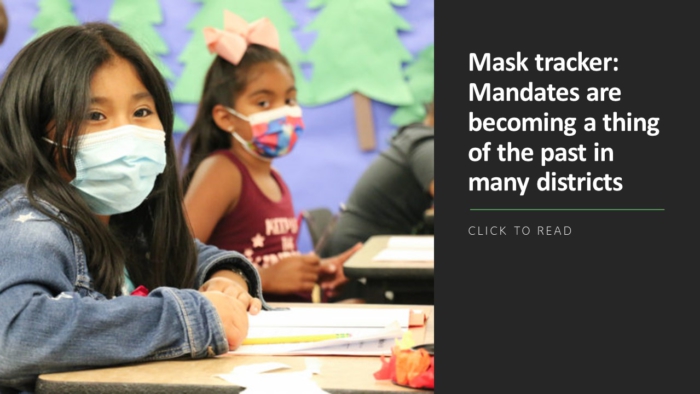A majority of districts, including some of the nation’s largest, have just lifted—or will soon lift—their mask mandates, leaving only a slim minority of schools still requiring face coverings for in-person instruction.
And with the masking decision in most parts of the county now left up to students and families—and many choosing not to wear—the CDC on Tuesday released new data clearly showing that mandates lessen the spread of COVID in school buildings significantly.
Districts that required masks experienced a 23% lower incidence of COVID-19 among staff members and students compared with districts without universal mandates, according to a CDC study of transmission rates in Arkansas schools last spring and fall. The CDC called the report, which covered 233 districts, the first large-scale evaluation of mask mandates and their effectiveness in blocking COVID.
“School mask policies were associated with lower COVID-19 incidence in areas with moderate to substantial community transmission,” the study says. “Masks remain an important part of a multi-component approach to preventing COVID-19 in K-12 settings, especially in communities with high COVID-19 community levels.”
In recent weeks, states with the most stringent and long-standing mandates—such as Connecticut, Massachusetts, New Mexico and New York—let the requirements expire. On Friday, California, Oregon and Washington will allow schools to go mask-optional. Hawaii’s indoor mask mandate is set to end on March 25 but officials expect schools will continue to require masks, Hawaii News Now reported
School leaders should also take note that the CDC’s Arkansas study also found that weekly COVID-19 incidences among students and staff members were higher than those in the surrounding communities and higher than expected based on community incidences for all mask policies. One reason for this appears to be low vaccination rates among students.
“This highlights the potential for incidence within schools to be higher than that in communities in settings where community transmission levels are moderate to substantial and where the majority of students are unvaccinated,” the study said, also noting that there were no school-based testing programs in place while the analysis was being conducted.
More from DA: Why 2 districts say moving to equitable grading gives students more hope









